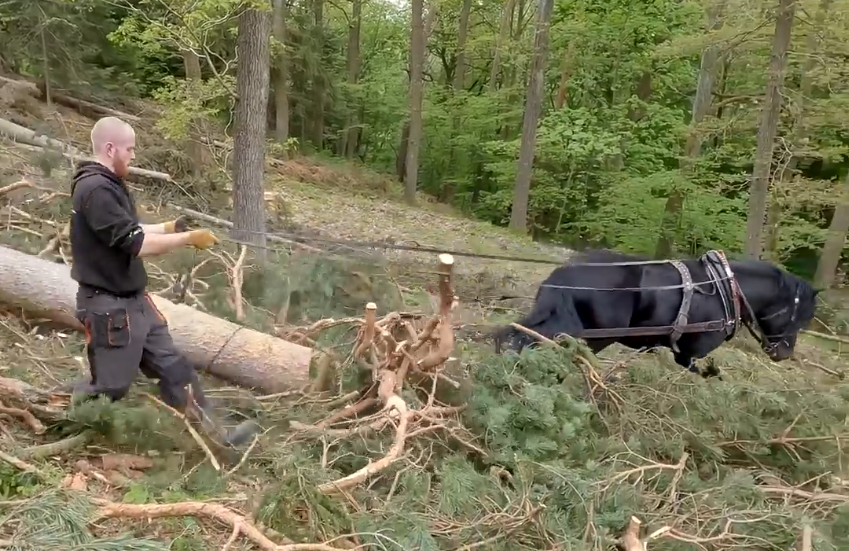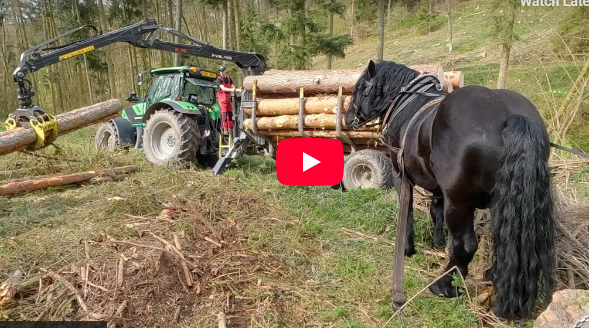Introduction: Power, Patience, and Tradition in the Forests
Deep in the hills of Central Europe, where machines struggle with the steep and slippery terrain, one ancient and powerful helper continues to shine—the draft horse. In the Czech Republic, one particularly stirring tradition has endured the march of modern forestry: using horses to pull timber from the forest to the edge of the trail, where mechanical forwarders take over.
This story is about the art and effort behind “S koněm v kopci”—a Czech phrase meaning “with a horse on the hill.” It refers not just to the physical act of pulling logs on a slope, but also to the relationship between horse and handler, and the culture of forestry rooted in respect for nature and heritage.
The Scene: Sloped Hills and Silent Forests
The event took place in a remote part of the Czech countryside, where the forest breathes with a serene, almost ancient rhythm. Tall spruce trees surround the hillsides, and moss carpets the forest floor. The ground is uneven and soft from recent rains, making it treacherous for heavy machinery.

Enter the draft horse: calm, muscular, and reliable. Its handler—often called a furman or kočí in Czech—is equipped with only a harness, a chain, and years of experience. Together, they move through narrow woodland paths, collecting pre-cut logs and slowly dragging them uphill to the main trail where a mechanical forwarder can pick them up.
Why Use Horses in Modern Forestry?
At first glance, it might seem outdated. Why use horses in the 21st century when large machines can process wood faster?
Here are the key reasons:
1. Minimal Environmental Impact
Horses cause significantly less damage to the forest floor. They don’t compact the soil or tear through undergrowth like heavy machinery does. This is critical for sustainable forest management, especially in protected or steep terrain.
2. Cost-Effective for Small-Scale Logging
Not all forestry jobs justify the high cost of modern equipment. For small harvests or hard-to-reach areas, horses are still more economical and efficient.
3. Tradition and Skill Preservation
Horse logging is not just labor—it’s a craft. The connection between horse and handler is built on trust, communication, and years of learning. Keeping this tradition alive is important for cultural and educational value.
Meet the Team: A Man and His Horse
One of the main participants in this event was Jaroslav, a veteran horse handler from southern Bohemia. His companion, Hasan, a 12-year-old Noriker horse, was strong and experienced, with calm eyes and a powerful chest.
Jaroslav and Hasan moved through the woods with synchronized grace. With a few quiet commands and slight touches on the rein, the horse would begin pulling, careful not to trip or let the log get stuck. When the terrain steepened, Jaroslav used a guiding pole to redirect the log’s path around rocks and roots.
Together, they demonstrated unspoken teamwork, forged over countless hours in the forest.
The Process: From Tree to Forwarder
1. Log Preparation
The trees are pre-felled and cut into sections, typically 2 to 6 meters long. The logs are arranged downhill or at a natural slope whenever possible.
2. Attachment
The handler connects the log to the horse’s harness with a chain, ensuring it’s balanced and won’t snag. In many cases, a steel sled or arch is used to lift the front of the log slightly off the ground, reducing friction.
3. Pulling Uphill
This is the hardest part. On wet or muddy slopes, both the horse and the handler have to navigate carefully. The horse must maintain steady, powerful steps while the handler clears the path and encourages the animal.
4. Transfer to Forwarder
Once the timber reaches the access trail, it is unhooked and stacked neatly for the forwarder— a mechanized vehicle that transports logs to the mill.
Challenges Faced on the Hill
Even with experience, this is not an easy job. The steep hill presents several challenges:
- Slippery terrain due to rain and loose soil
- Obstacles like roots, boulders, or dense brush
- The risk of logs rolling backward or injuring the horse
- The constant need for judgment, strength, and patience
These challenges make it clear why horse logging is a skill not easily learned from books. It requires generations of knowledge passed down through families.
The Sounds of the Forest
One remarkable aspect of this event was the silence. Unlike roaring engines and clanking metal, horse-powered logging is almost peaceful. You hear only:
- The crunch of hooves on fallen leaves
- The occasional snort or breath from the horse
- Chains clinking softly as logs shift
- The murmur of wind in the trees
This quiet working environment is healthier for wildlife, less disruptive to the ecosystem, and often described as therapeutic for the workers themselves.
A Living Tradition
In recent years, Czech forestry associations and cultural groups have worked hard to preserve this tradition. Demonstration events like the one in this story are more than performances—they are living heritage.
Children come to learn, families come to admire, and the older generations come to remember. These gatherings keep rural knowledge alive, while raising awareness of sustainable forestry methods.
Conclusion: Strength in Simplicity
“S koněm v kopci” is more than just pulling timber. It is a testament to harmony between humans, animals, and nature. As the world races toward automation, it’s comforting—and inspiring—to know that traditions like this still thrive in the quiet forests of the Czech Republic.
With each step up the hill, the horse brings more than logs—it carries centuries of wisdom, respect, and resilience.
